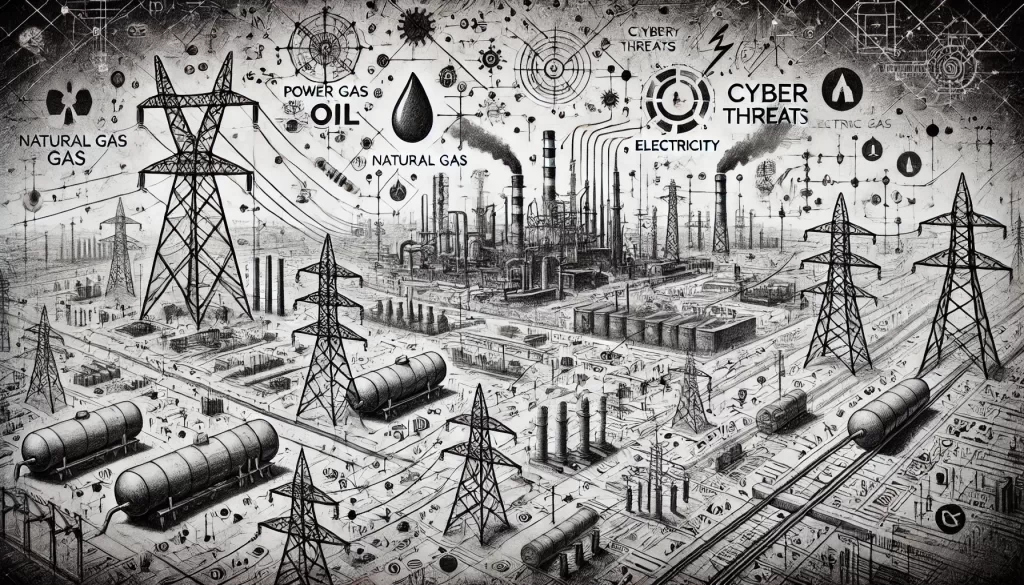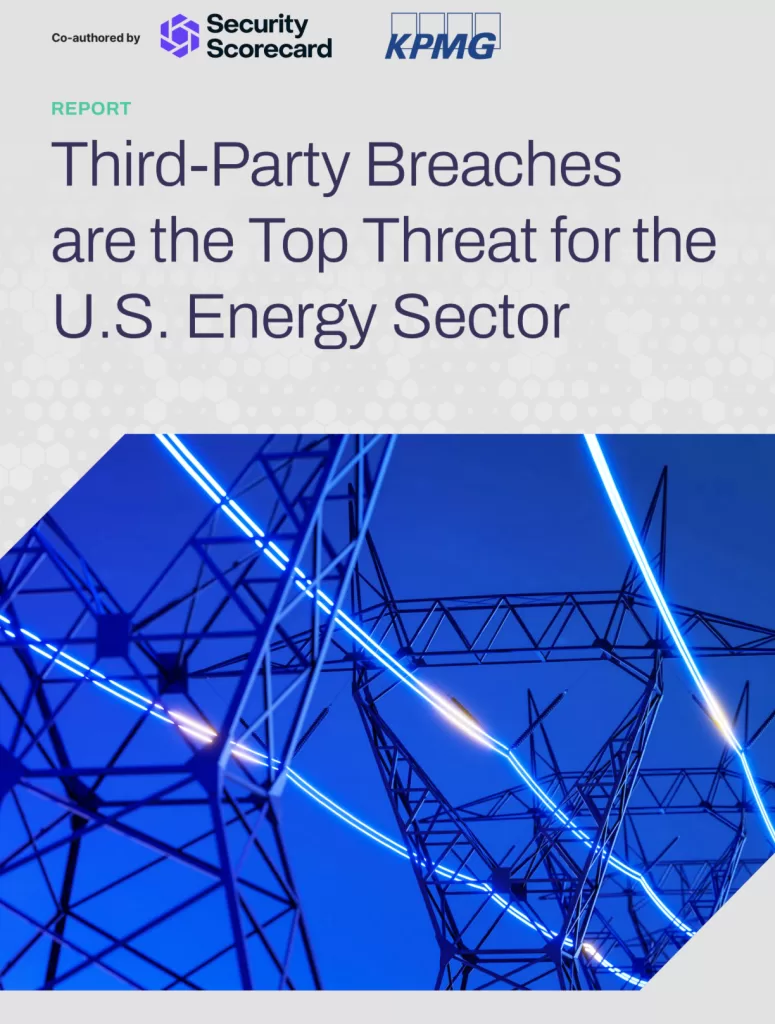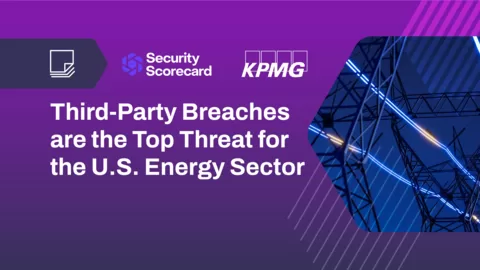The energy sector powers nearly every facet of modern life, from the moment you flip a light switch to the fuel that propels global industries forward. It’s a sprawling network of interconnected systems—electricity, oil, and natural gas—delivering critical resources through over 6,400 power plants and countless miles of pipelines. The scale is vast, and so are the vulnerabilities. The sector faces constant risks not only from physical breakdowns but also from emerging cyber threats. It’s not just an industry under siege; it’s the backbone of society, making every cybersecurity breach a threat to national stability.
Amid this heightened threat environment, SecurityScorecard and KPMG LLP released a timely report, A Quantitative Analysis of Cyber Risks in the U.S. Energy Supply Chain, detailing the cybersecurity vulnerabilities across the U.S. energy sector. The report, which evaluates 250 of the largest U.S. energy companies, shines a spotlight on the growing cyber risks plaguing the energy industry and offers recommendations to bolster security across the supply chain. It comes at a critical juncture, aligning with global efforts to improve cybersecurity in the energy sector following the G7 summit’s commitment to strengthen defenses against cyberattacks.

“Generational Risk Exposure”
“The energy industry is a complex system that is undergoing a generational transition with a heavy reliance on a steady supply chain. With geopolitical and technology-based threats on the rise, this complex system is facing an equally generational risk exposure that could harm citizens and businesses alike. Organizations that are able to quantify these risks and establish mitigation measures will increase their odds of success in the energy transition journey,” said Prasanna Govindankutty of KPMG.
The U.S. Department of Energy and other agencies have actively advanced cybersecurity principles to protect the energy supply chain, and this report provides valuable insights into areas that remain highly vulnerable, particularly to third-party risks.
Our further thoughts on the report follow; you can read the whole report here.
Key Findings from the Report

One of the report’s most striking conclusions is that third-party breaches are disproportionately high in the energy sector, accounting for nearly 45% of all breaches, a figure significantly higher than the global average of 29%. The report notes that energy companies are increasingly reliant on third-party vendors—particularly software and IT providers—making them more vulnerable to security lapses that occur outside their immediate control. Alarmingly, 90% of companies hit with multiple breaches experienced at least one of those breaches through a third-party vendor.
The U.S. energy sector received a “B” average rating on cybersecurity, based on SecurityScorecard’s scoring methodology. While 81% of companies have respectable “A” or “B” ratings, the remaining 19% with weaker ratings pose a significant risk to the overall energy supply chain. These weaker companies act as soft entry points for cyberattacks, which can have a cascading effect on more secure companies connected through the supply chain.
Renewable Energy
Moreover, renewable energy companies are falling behind in terms of cybersecurity. The report highlights that oil and natural gas companies score significantly better, with an “A−” average, while renewable energy firms lag with a “B−” rating. This disparity becomes increasingly concerning as the energy grid shifts towards cleaner energy sources. While environmentally beneficial, a greener grid will rely more heavily on software and interconnected systems, making it more susceptible to cyberattacks.
Another key takeaway from the report is that most vulnerabilities are concentrated in just a few areas: application security (40%), network security (23%), and DNS health (29%). The report emphasizes that these areas should be the primary focus for companies looking to improve their cybersecurity posture. Application security, in particular, was identified as a top risk across multiple sectors, with weaknesses in areas like encryption protocols and session cookie security accounting for a significant portion of breaches.
The Growing Threat Landscape
Cyber threats to the energy sector are multifaceted, ranging from ransomware attacks on operational systems to more conventional data breaches that expose sensitive employee or customer information. Ransomware, in particular, has emerged as one of the most significant threats to energy companies. Groups like Nefilim and BlackCat/ALPHV have increasingly targeted the sector, recognizing that energy companies’ need for operational continuity makes them attractive targets for extortion. The Colonial Pipeline ransomware attack in 2021 remains a prominent example of how even minor disruptions in IT systems can lead to major supply chain interruptions.
While industrial control systems (ICS) and operational technology (OT) are often cited as potential weak points, the report suggests that conventional IT systems remain the primary target for cybercriminals. The ransomware attack on Colonial Pipeline did not involve the compromise of ICS/OT systems but rather the company’s IT billing system—yet the disruption it caused was far-reaching.
Looking ahead, the growing reliance on third-party vendors will continue to pose risks. Of the third-party breaches analyzed in the report, 67% were linked to software and IT vendors, further emphasizing the need for energy companies to scrutinize their partners’ cybersecurity practices. Notably, none of the breaches involved other energy companies, highlighting the cross-industry nature of these vulnerabilities.
Recommendations for Strengthening Cybersecurity
Prioritize Third-Party Risk Management: Third-party breaches are the leading cause of cyber incidents in the energy sector. Companies must enhance their vendor vetting processes and establish stringent security requirements. Continuous monitoring of vendor networks and systems is also essential to prevent vulnerabilities from going unnoticed.

Strengthen Security Around Renewable Energy: Renewable energy firms, often smaller and newer, need to invest more heavily in cybersecurity to protect themselves against nation-state and criminal cyberattacks. The shift to cleaner energy should not come at the cost of weaker security.
Learn from Foreign Attacks: U.S. energy companies can gain valuable insights by studying ransomware attacks on foreign counterparts. Understanding the tactics used in these attacks can help companies bolster their defenses and improve resilience.
Prepare for Common Cyber Threats: While large-scale disruptions like ransomware attacks attract the most attention, companies should also remain vigilant against more common threats like data breaches, which can expose sensitive information and cause long-term reputational damage.
A Call to Action
As the U.S. energy sector transitions toward cleaner and more interconnected energy systems, the need for robust cybersecurity has never been more urgent. The A Quantitative Analysis of Cyber Risks in the U.S. Energy Supply Chain report serves as a wake-up call for industry leaders to take decisive action to protect their operations. The cost of inaction could be catastrophic for individual companies, the entire energy supply chain, and, by extension, the national economy.
Other News: Cyber Insurance for Energy And Utility Sector Expands with CAC Group’s CyberPeril Pro(Opens in a new browser tab).
Other News: INTERPOL Arrests 8 in Major Phishing and Romance Fraud Crackdown in West Africa.